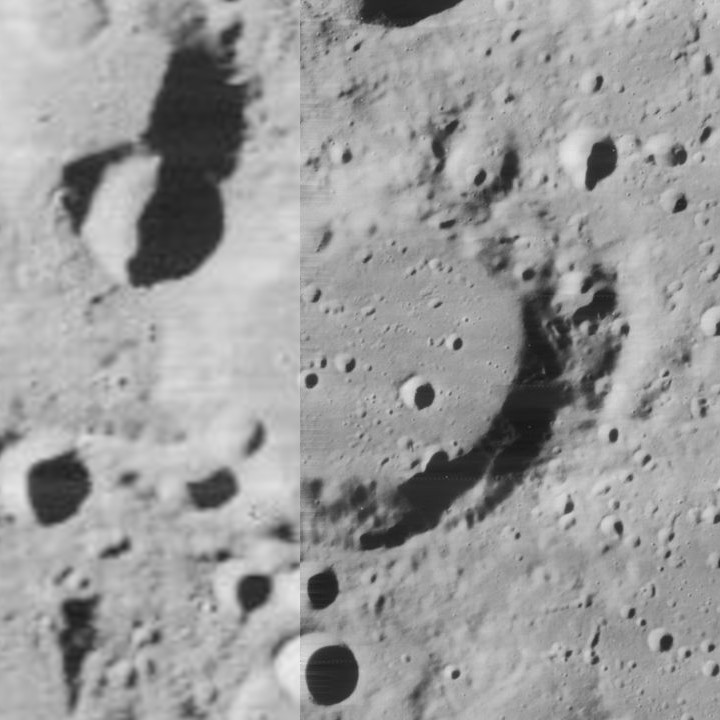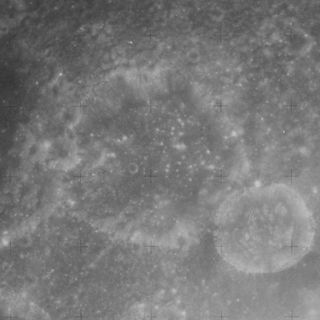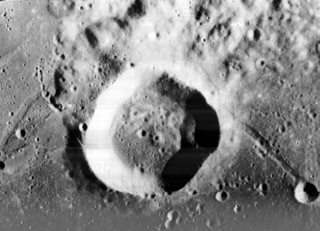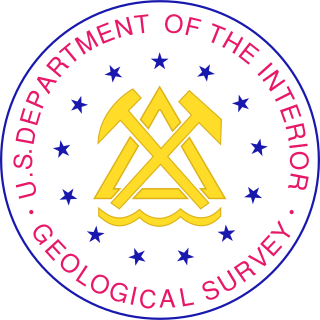
Abul Wafa is an impact crater located near the lunar equator on the far side of the Moon, named after the Persian mathematician and astronomer Abu al-Wafa' Buzjani. To the east are the crater pair Ctesibius and Heron. In the northeast lies the larger crater King, and to the southwest is Vesalius.

Appleton is a heavily eroded lunar impact crater that lies in the northern hemisphere on the far side of the Moon. To the northwest are the craters Von Neumann and Campbel. The smaller Golovin lies to the northeast, while further to the southwest is the Mare Moscoviense.

Armiński is a small lunar impact crater that is located on the far side of the Moon, to the northeast of the large walled basin Gagarin. To the northwest of Armiński is the crater Beijerinck, and to the southeast lies Cyrano.

Asclepi is a heavily eroded lunar impact crater that lies in the rugged southern highlands of the Moon. The outer rim has been worn down and rounded by many millions of years of subsequent impacts, so that it is now nearly level with the surrounding terrain. As a result, the crater is now little more than a depression in the surface. The interior is nearly flat and relatively featureless.

Byrd is an irregular lunar impact crater that is located near the north pole of the Moon. The north rim of Byrd is nearly connected to the crater Peary, a formation that is adjacent to the pole. The smaller crater Gioja is attached to the remains of the southwest rim.

Barnard is a lunar impact crater that is located near the eastern limb of the Moon. It is attached to the southeast rim of the large crater Humboldt, and Abel lies directly to the south. To the northeast is the crater Curie, while to the southeast is the Mare Australe.

Dawson is a lunar impact crater that lies on the southern hemisphere on the far side of the Moon. It lies across a crater triplet: the southeast rim is intruding into the crater Alekhin; the northwest rim also intrudes into the larger satellite crater Dawson V, and the northeast rim is attached to the comparably sized Dawson D. To the south of this formation is the large crater Zeeman. West of Dawson is the crater Crommelin, and to the north lies Fizeau.

Biela is a lunar impact crater that is located in the rugged highlands of the southeastern Moon. It is named after Austrian astronomer Wilhelm von Biela. The crater lies to the east of Rosenberger, to the southeast of the Watt–Steinheil double crater.

Boltzmann is an old lunar impact crater that is located along the southern limb of the Moon, in the vicinity of the south pole. At this location the crater is viewed from the side from Earth, and so not much detail can be seen. It is located to the north of the walled plain Drygalski, and to the west of the crater Le Gentil.

Bhabha is a lunar impact crater that is located in the southern part of the Moon's far side. It is nearly attached to the southeast rim of the larger crater Bose, and the outer rampart of that crater has produced a slight inward bulge along the northwest face of Bhabha. Other nearby craters of note include Stoney to the east, and Bellinsgauzen to the south.

Bobone is an old, heavily eroded crater formation that lies on the far side of the Moon. Little remains of the original crater formation, leaving only a bowl-shaped depression in the surface that is pock-marked by tiny craterlets. It is attached to the southwest rim of the large satellite crater Kovalevskaya Q, which has its northeast rim overlaid by Kovalevskaya itself. To the west-southwest is Bronk.

Isidorus is a lunar impact crater that is located to the north of the Mare Nectaris, on the eastern half of the Moon's near side. It was named after Spanish astronomer Saint Isidore of Seville. It forms a pair with the slightly larger Capella, which is attached to the east-northeastern rim. To the west-southwest across the lunar mare are Mädler and the prominent Theophilus.

Cleostratus is a lunar impact crater near the northwest limb of the Moon. It lies to the northeast of the crater Xenophanes, and west-southwest of the prominent Pythagoras. From the Earth this crater appears highly elongated due to foreshortening.

Comstock is a lunar impact crater that is located on the far side of the Moon. It lies to the northeast of the walled plain Fersman, and north of the crater Weyl.

Jenkins is a lunar impact crater that lies along the equator of the Moon, near the eastern limb. It is attached to the eastern rim of the slightly larger crater Schubert X, intruding somewhat into the interior. The crater Nobili is likewise attached to the western rim of Schubert X and intrudes slightly into the interior on that side. The three craters form a linear chain along the equator.

Donner is a lunar impact crater on the far side of the Moon. It is located just to the northeast of the Mare Australe, behind the southeastern limb of the Moon. During favorable librations this part of the lunar surface can be brought into view of the Earth, but the site is viewed from the edge and so not much detail can be seen.

Evershed is a lunar impact crater on the far side of the Moon, named after the English solar astronomer John Evershed. It is located to the northeast of the larger crater Cockcroft, and to the north of the smaller Van den Bergh.

Volkov is a lunar impact crater on the Moon's far side. It is located to the north of the prominent crater Tsiolkovskiy, and east-southeast of Dobrovol'skiy. Overlying the southeastern rim of Volkov is the satellite crater Volkov J, and the two have merged to form a figure-8 shape. The crater Lander is attached to the southwest rim of Volkov J, making this a triple-crater formation.

Mitra is a lunar impact crater that is attached to the western outer rim of the larger crater Mach, on the far side of the Moon. Just to the west of Mitra is Bredikhin, and to the south-southeast lies Henyey. It is named after Sisir Kumar Mitra.

Prager is an impact crater on the Moon's far side. It was named after German-American astronomer Richard Prager. It is located just to the northeast of the crater Love. Farther to the south-southeast lies Lane. To the north of this crater and leading away to the northwest is a crater chain that has been designated Catena Gregory.


























